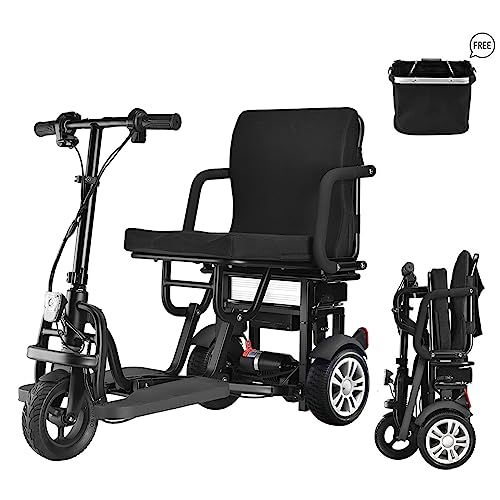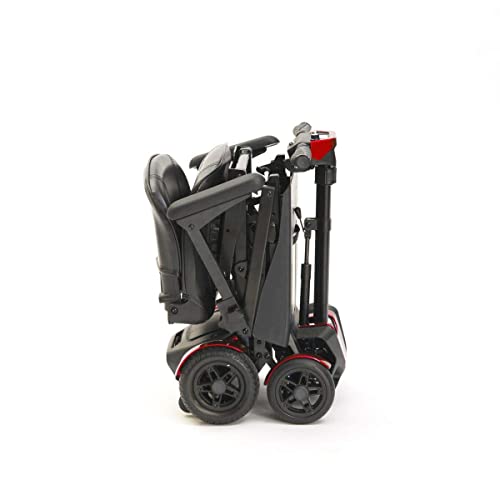Why You're Failing At Electric Pedal Scooters
페이지 정보
작성자 Herbert Fishbou… 댓글 0건 조회 233회 작성일 24-11-28 05:02본문
 Electric Pedal Scooters
Electric Pedal ScootersA two wheeled vehicle with pedals, typically limited to speeds of 30 MPH or less. Registration, insurance, and license are required (can vary by state).
E-scooters are a great way to move around and reduce our reliance on fossil fuels. They're also an excellent alternative for those who require some help to get moving such as those with heart or leg muscles issues.
1. Pedal Assist
Pedal-assist technology lets riders cruise around without exerting continuous physical effort. A simple press of the throttle controls the motor to provide an individualized level of support that ranges from minimal to full power. The system is activated by a sensor which is attached to the bike's pedals. The sensor is able to detect the cadence (speed of pedal rotation) and sends an electronic signal to the controller. The sensor adjusts electric motor power output according to the cadence information to provide an enjoyable ride. The rider has the option of selecting the desired level of pedal assistance. A lower level could assist with terrain that is difficult, while a higher one is able to allow for a more intense exercise, but it's crucial not to let the assist power level override the rider's personal limits.
Based on the model of the electric scooter, different levels of assistance are available. Cadence sensors are the most common type that utilizes a magnet installed adjacent to the pedals to detect the movement. When the magnet detects movement, it activates the motor and distributes power to the cranks according to the pedaling rate. This method is generally intuitive and smooth, however, certain models also have torque sensors to offer an experience that is more natural.
There are a few kinds of e-bikes that work using a throttle instead of an electronic torque sensor or cadence. These systems are usually more expensive, and riders must press a button on the handlebars to activate the motor. This type of system is ideal for people with limited mobility who need to access motor power without the need for actual pedaling.
It is essential to know these technical specifications in order to make the right decision when selecting an electric scooter. You can evaluate the performance of an electric lightweight mobility scooter travel electric scooter for seniors scooter cheap (right here on go-god.main.jp) scooter by understanding the specifications of an electric scooter, including its power (wattage, voltage) capacity of the battery and range, speed as well as suspension systems, brakes, carrying mechanisms, and brakes (drum, disc and Regenerative). It's not just a matter of being literate - learning the terms will help you make the best portable electric mobility scooter choice to meet your needs and lifestyle.
2. Torque Sensor
The torque sensor is a device utilized on some electric bikes to measure the amount of force being applied by the rider's feet on the pedals. The data is sent to the motor controller which adjusts the power output to the exact. The motor will provide more assistance to the rider if they put in more effort. The motor can lower its power output if the rider isn't exerting much effort. For instance, when the motor is cruising or stopped.
Torque sensors are made by the use of strain gage technology or another similar technology inside the bottom bracket, where the cranks and pedals are attached to the frame. The sensor detects movement and relays it to the motor controller. It then calculates the force applied to pedals. This is a more accurate method to determine the force the rider is pedaling, which lets the motor provide the best level of support.
Another benefit of a torque sensor is that it is able to detect subtle changes in the pressure applied to the pedals than a cadence sensor can. This creates a more natural feeling and makes the motor appear like an extension of the rider rather than simply providing power based upon the level of assistance you select.
A cadence sensor, on other is based on magnets to detect if the crank arm is moving. If so it will turn on the motor to supply power. This can result in a faster acceleration time but it does not provide the same type of smooth and natural sensation that many riders want.
A cadence sensor also has a drawback: it only operates when the bike is in motion. This could be a problem in rough terrain, as the pedals could move with little to no force due to loose dirt or uneven ground. It also means that the rider has to wait for the motor to start working before they can accelerate which can be a challenge when starting from a standstill or going downhill.
3. Lean-To-Steer
If your child is looking to speed up their trip to school or just scoot around the neighborhood, they'll need to learn how to steer their scooter. There are many kick scooters available in two-wheeled versions which require you to turn the handlebars in the same way as a bicycle, or three-wheeled models that are more stable for preschoolers and elementary school children.
These are referred to as "lean-to-steer" scooters. They function by having children shift their weight in a specific direction to cause the wheels to move in that direction, similar to like the skateboard. It might seem odd to adults, but children quickly pick up on this method. It's also more comfortable for younger children, as they don't need to use their hands to steer.
Lean-to steer systems are also more stable on uneven surfaces, and allows for gradual, easy turns. It is therefore the perfect scooter for children who wish to ride along sidewalks or on roads.
Drobnjak explained that scooters improve gross motor development because they strengthen the supporting leg and hip. This helps with balance and coordination. The propelling leg, on other hand, increases strength by focusing on the quadriceps and hamstring muscles. Drobnjak said that the skills that children acquire while scooting could be transferred to other sports, like skating, surfing, and skiing.
A good scooter will feature a height-adjustable steering wheel and a variety of weight limits, meaning it can grow with your child over time. It should be durable and constructed from non-breakable materials that can withstand tough wear and tear, and last for a long time.
The Micro Maxi scooter is a great example of this kind of equipment. It has a three-wheeled design and lean to steer technology. The wheels are designed to glide over bumps and cracks easily, ensuring greater stability for younger kids while riding their scooters. The lean-to-steer system also enables children to adjust their riding on the fly by simply shifting their body weight in a specific direction. This lets them be more comfortable, faster and safer than traditional scooters.
4 wheeled electric mobility scooter 1000w veleco faster. Large Storage
The Large Storage is an utility item that provides additional Tier-2 attachment slots for the Astroneer's base of players. It can hold up 24 small electric mobility scooter items, and can be oriented in either horizontal or vertical positions. It can be placed in a way so that two of the slots are angled downwards, making it suitable for Floodlight. All inventory from multiple mounted Large Storage Modules will also unify and interact like one module. So long as the module is active, it will also be able to power an RTG platform or another powered platform. Check out the video below to learn how it operates!

댓글목록
등록된 댓글이 없습니다.

